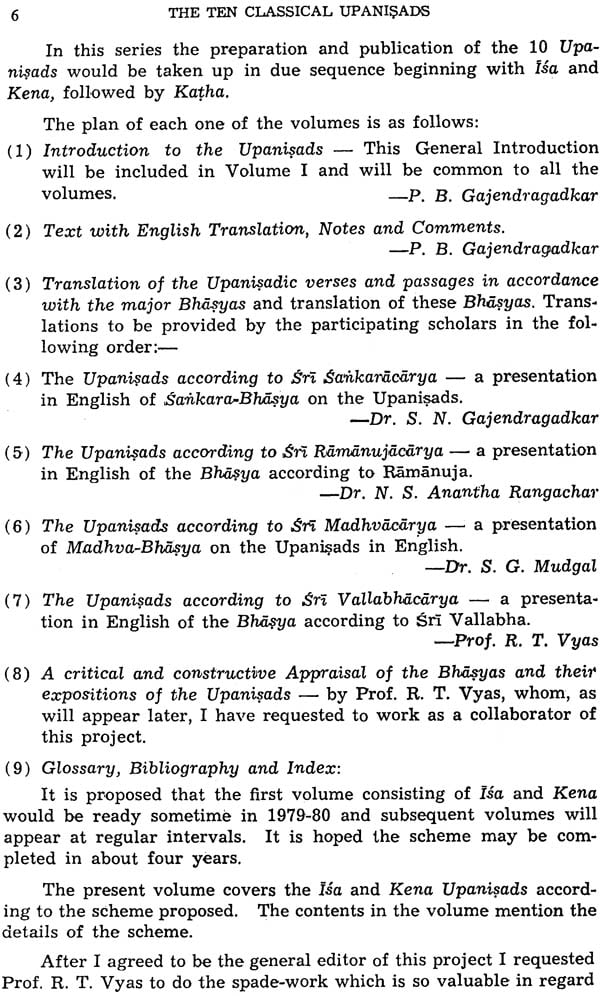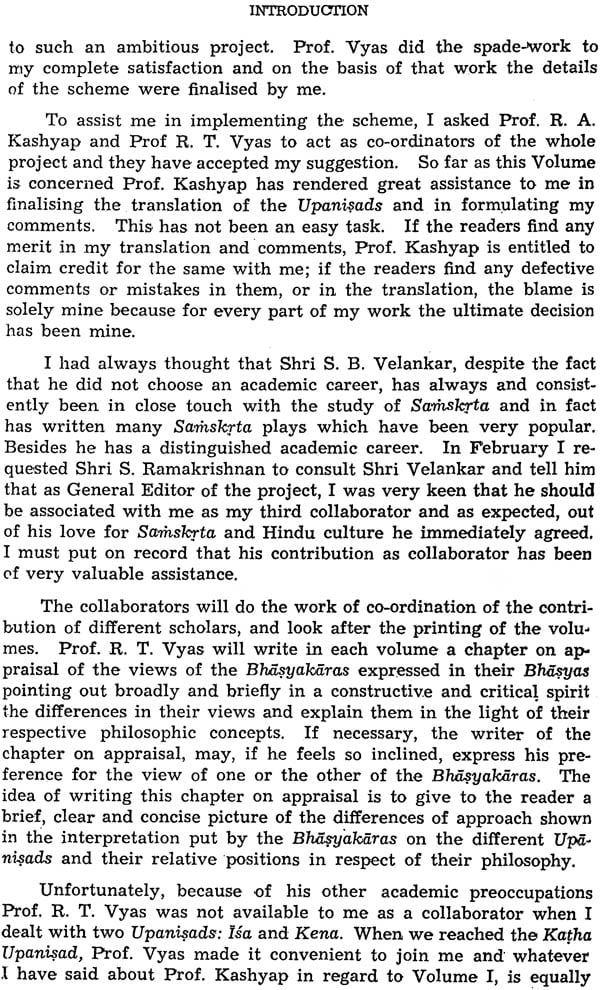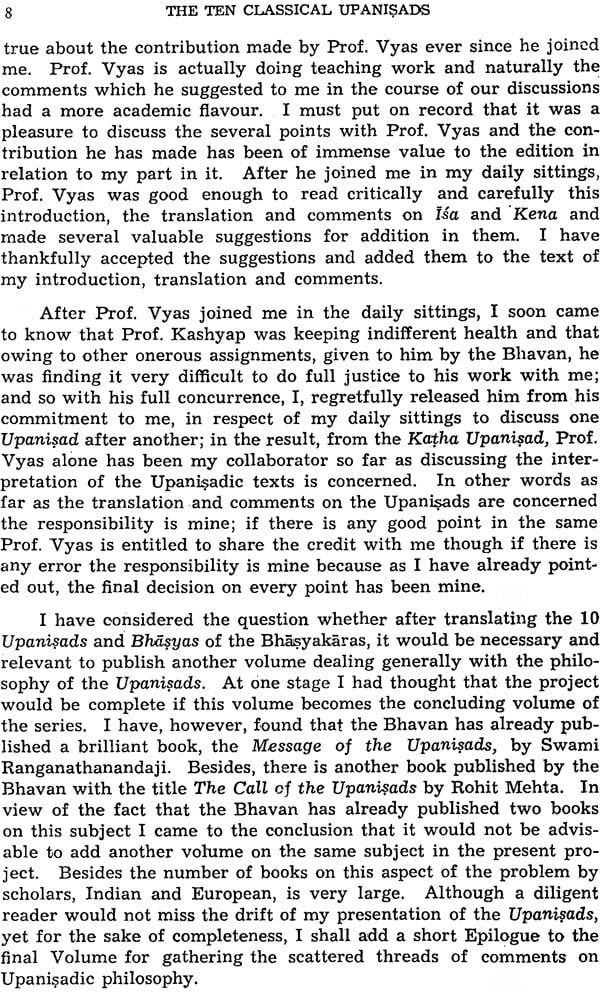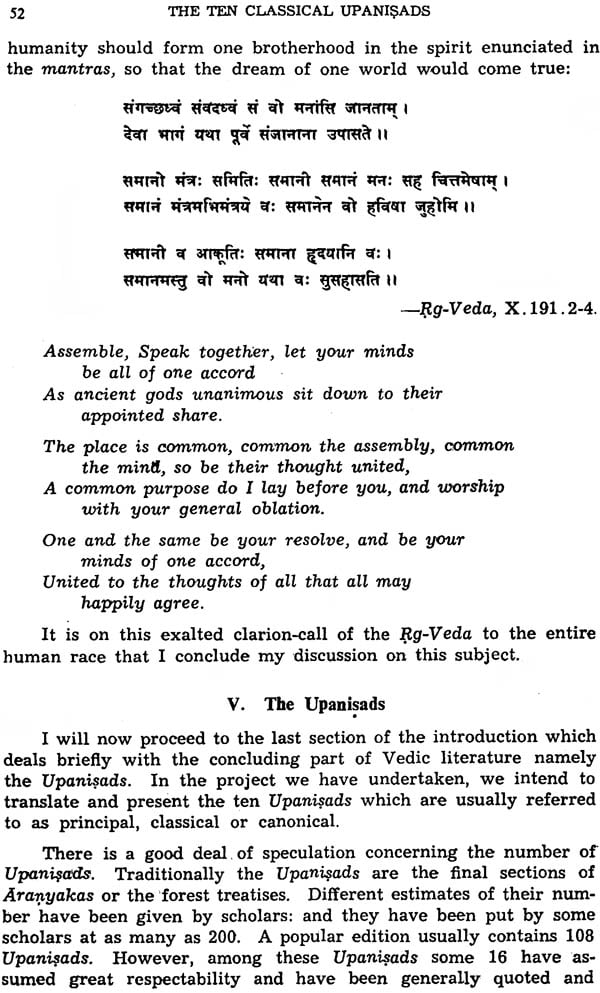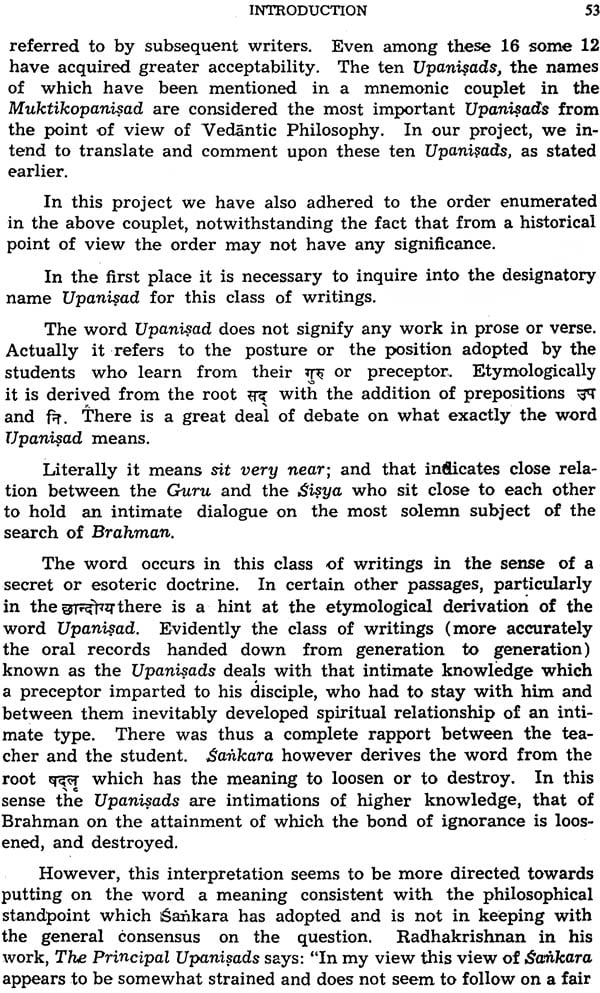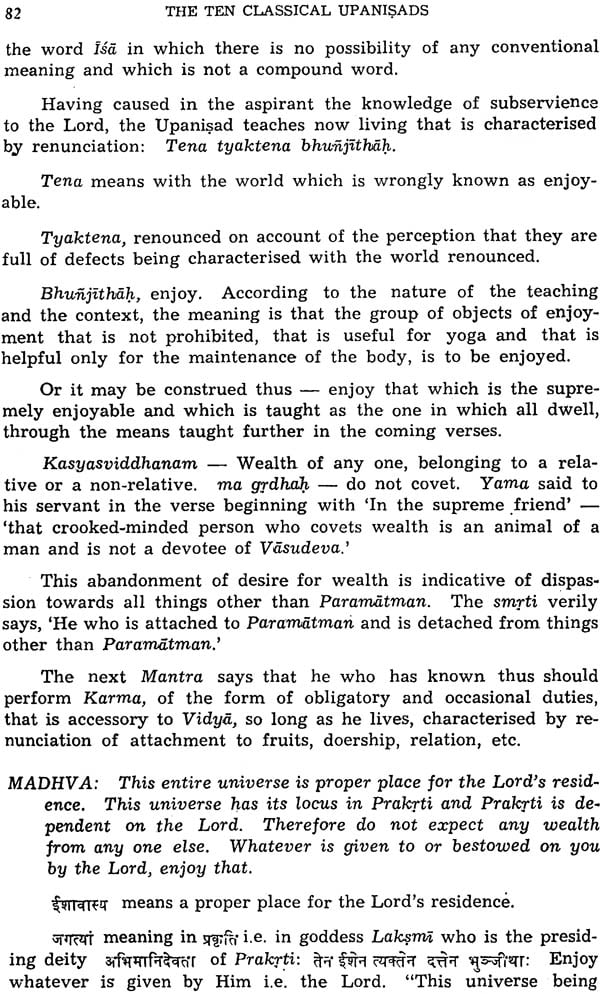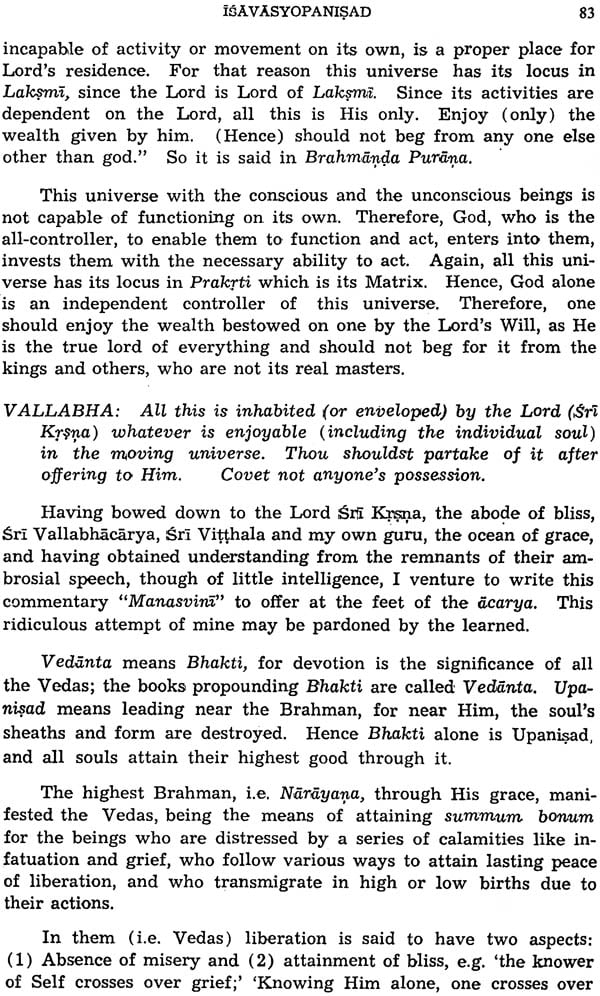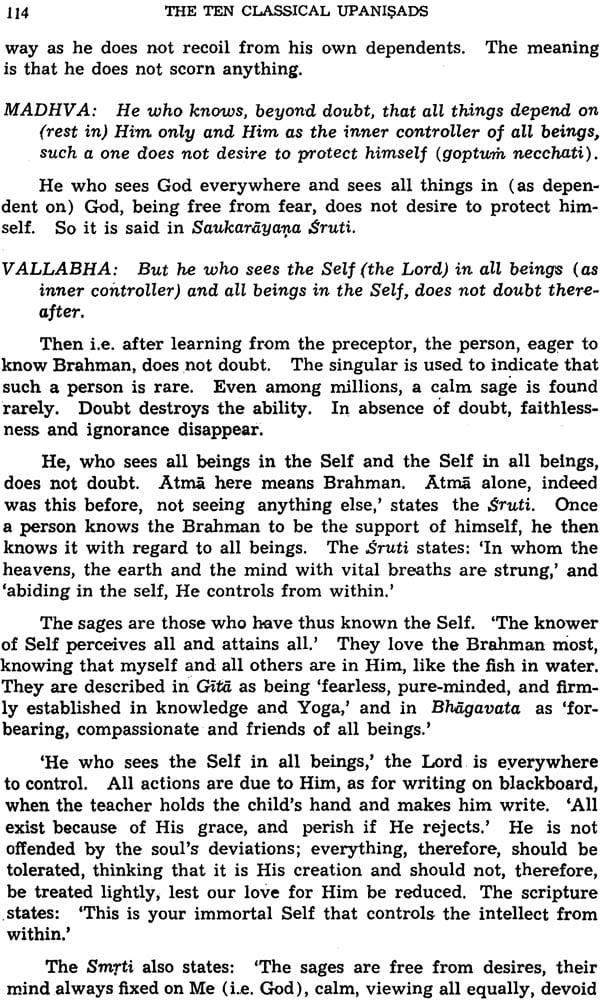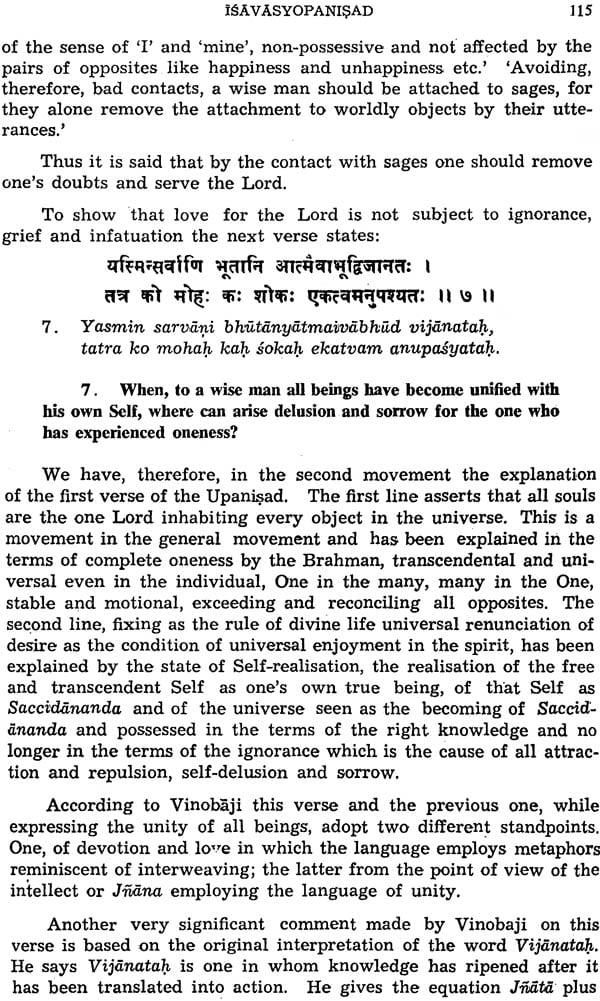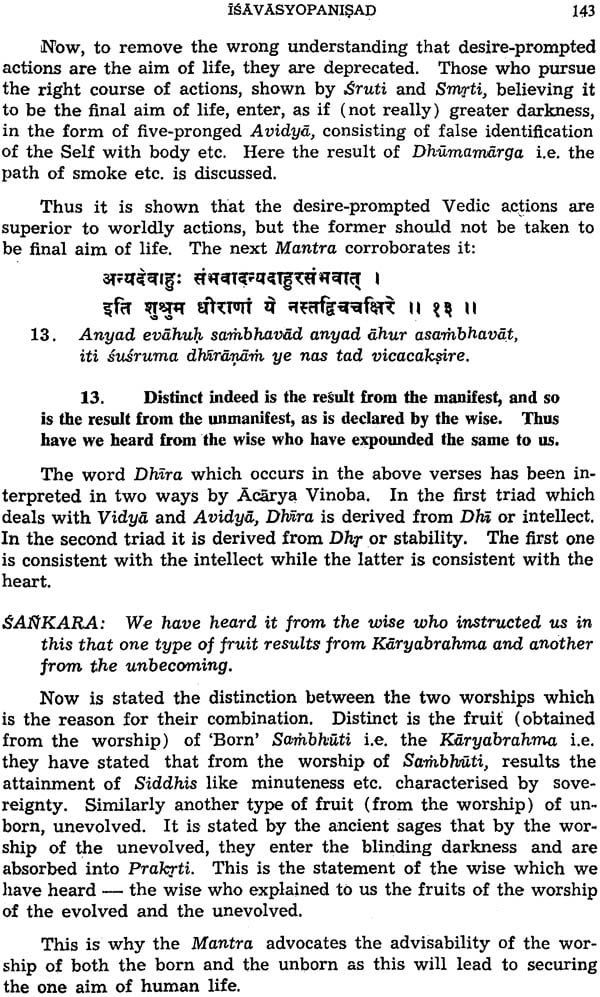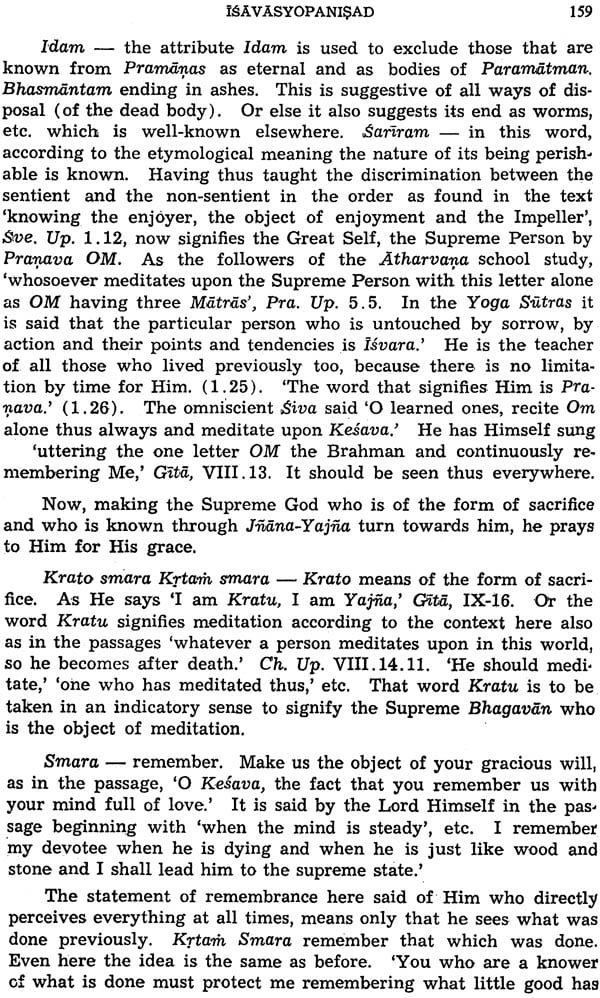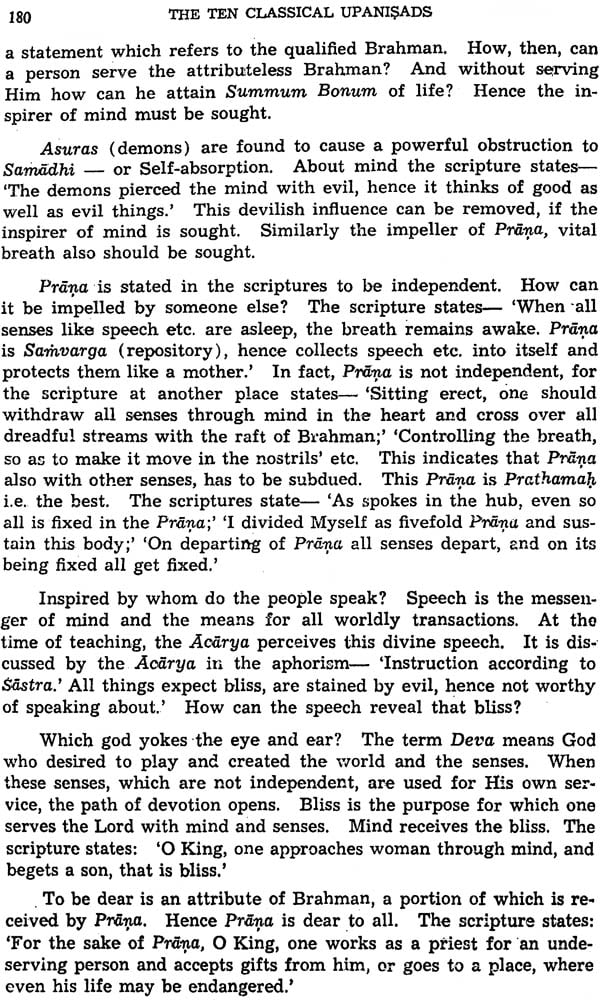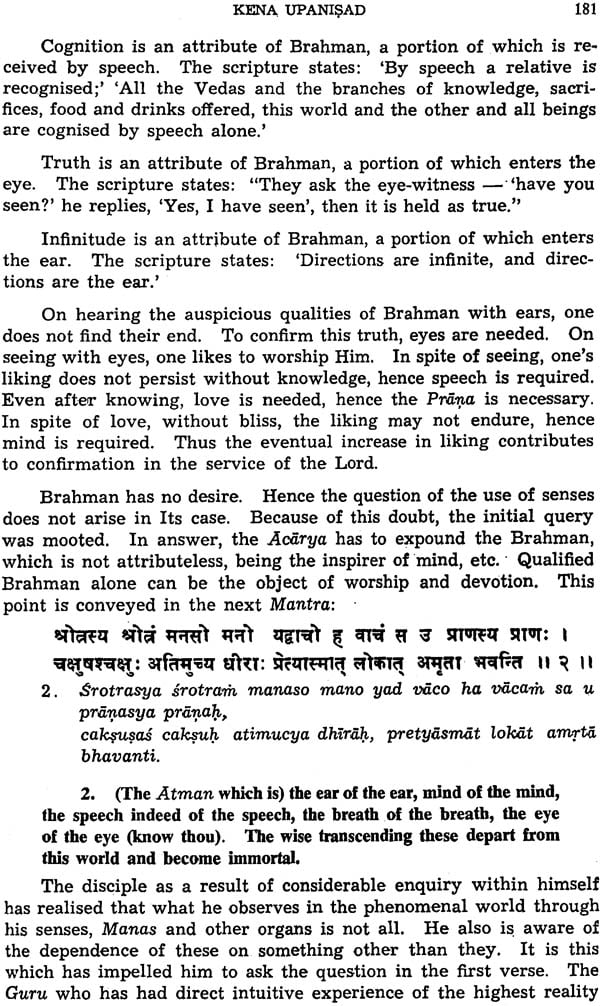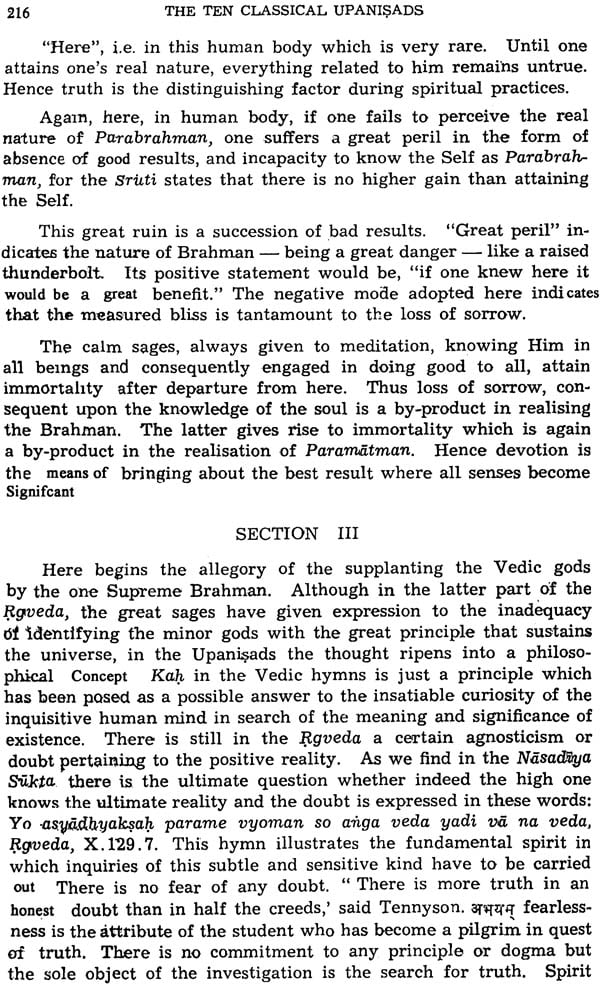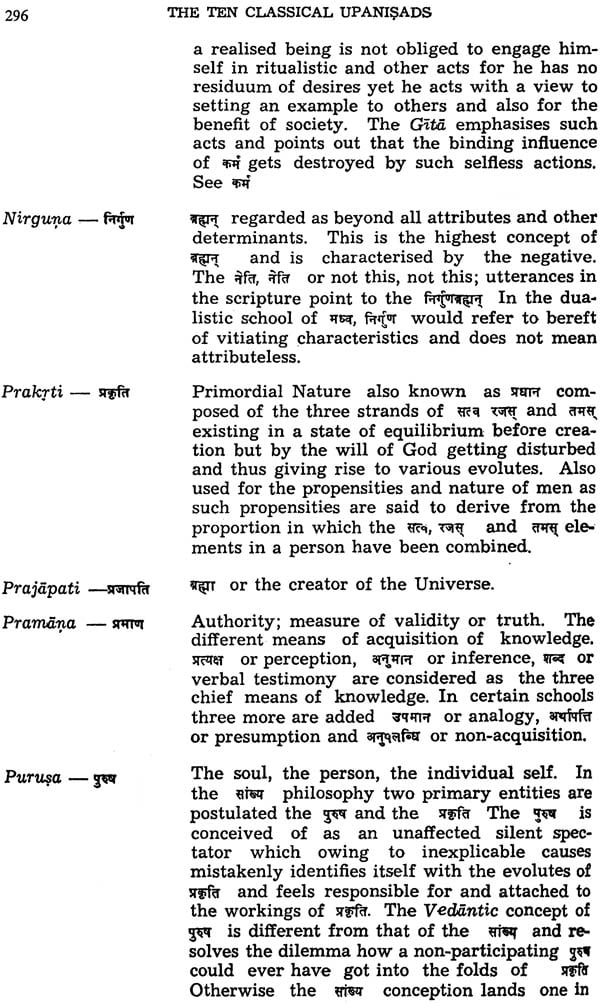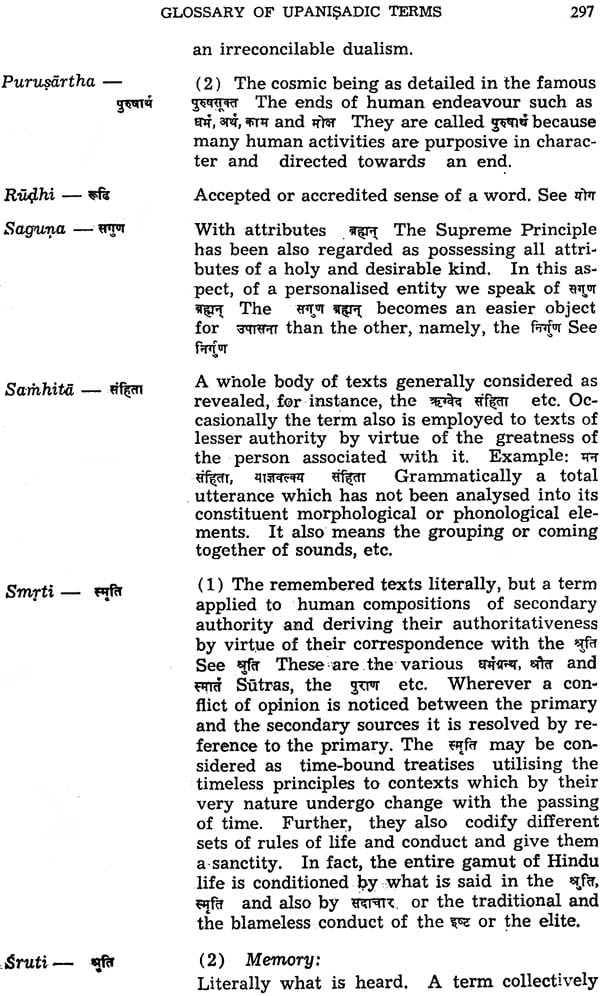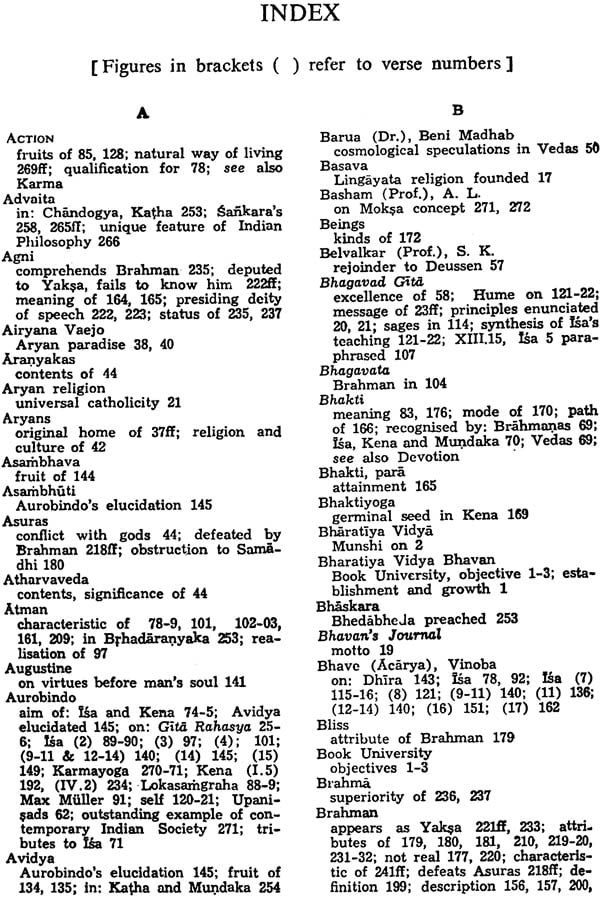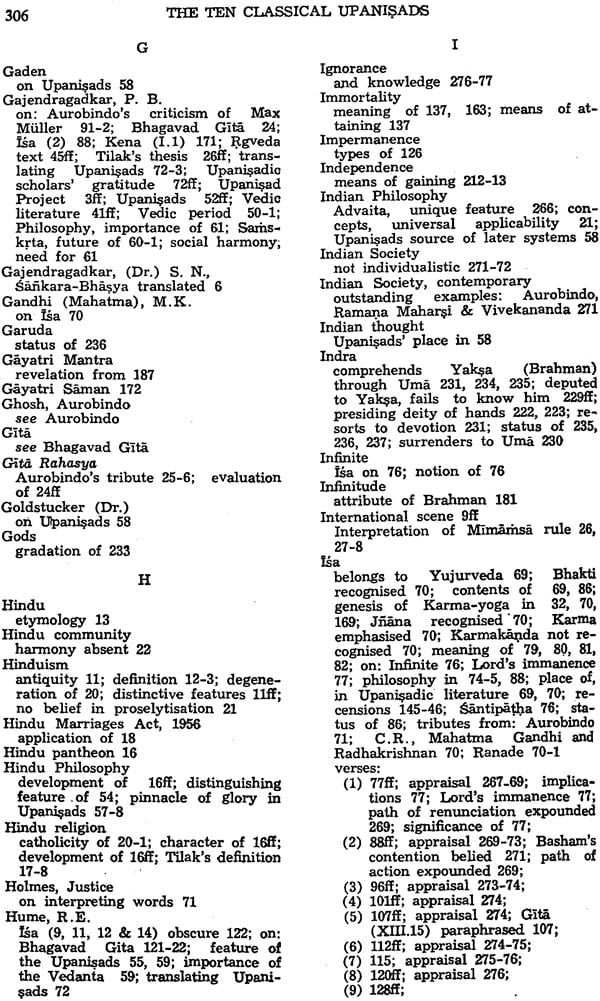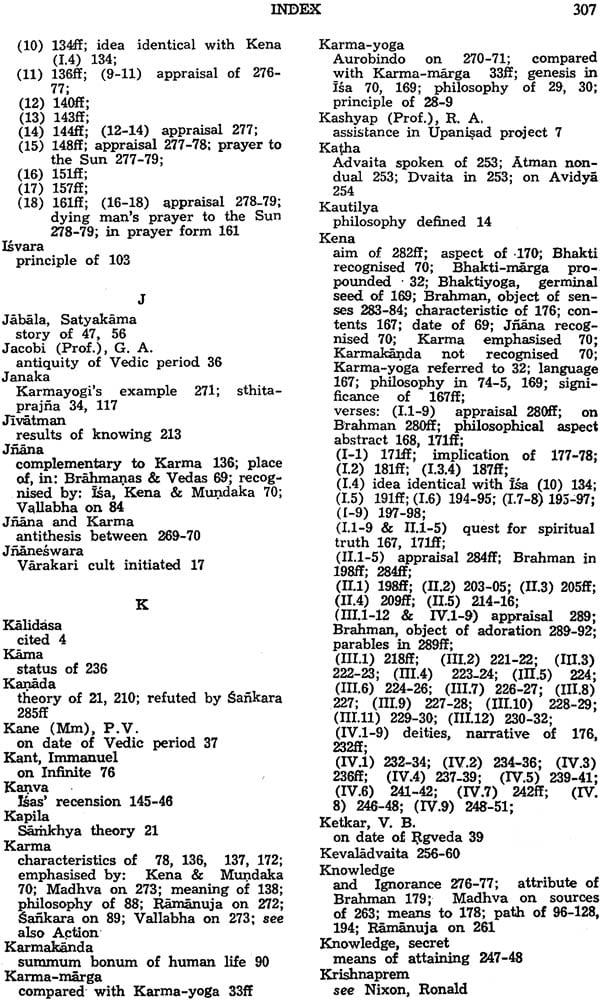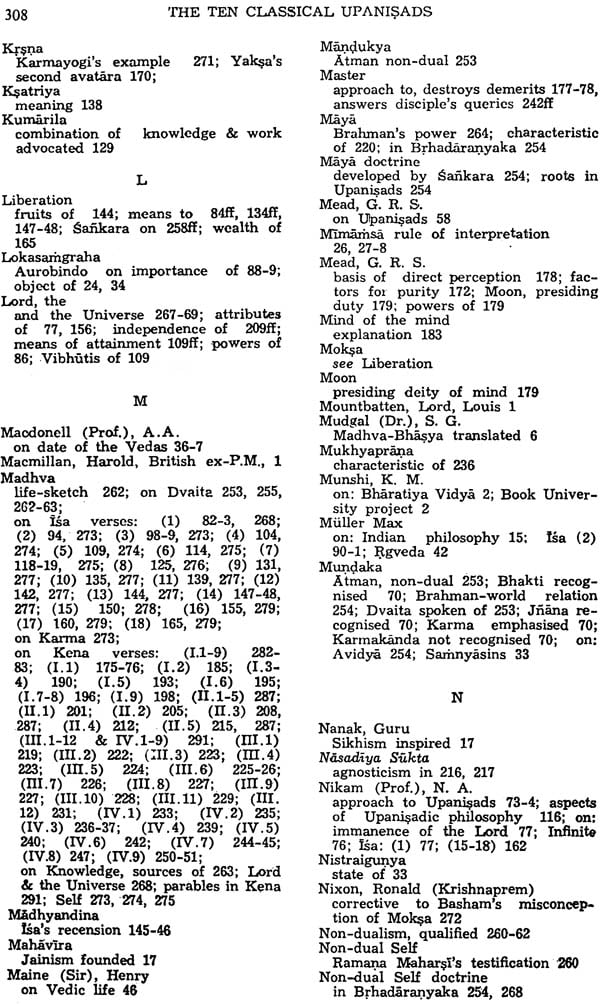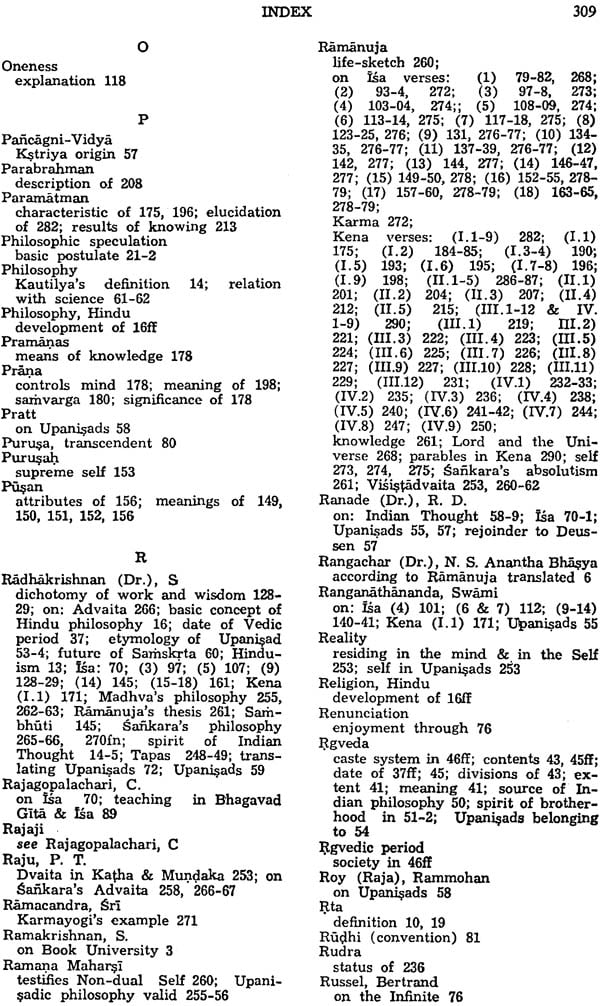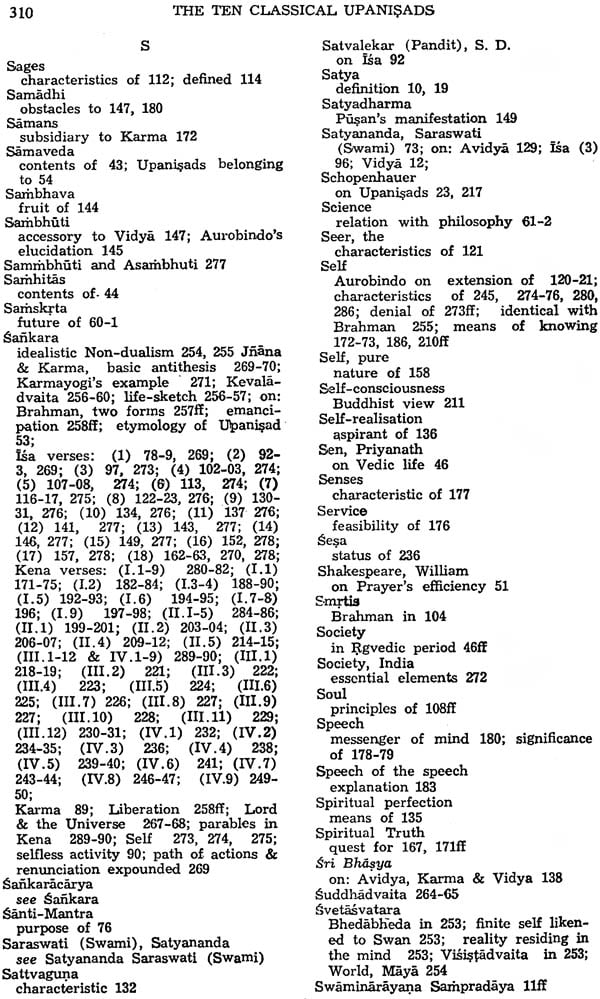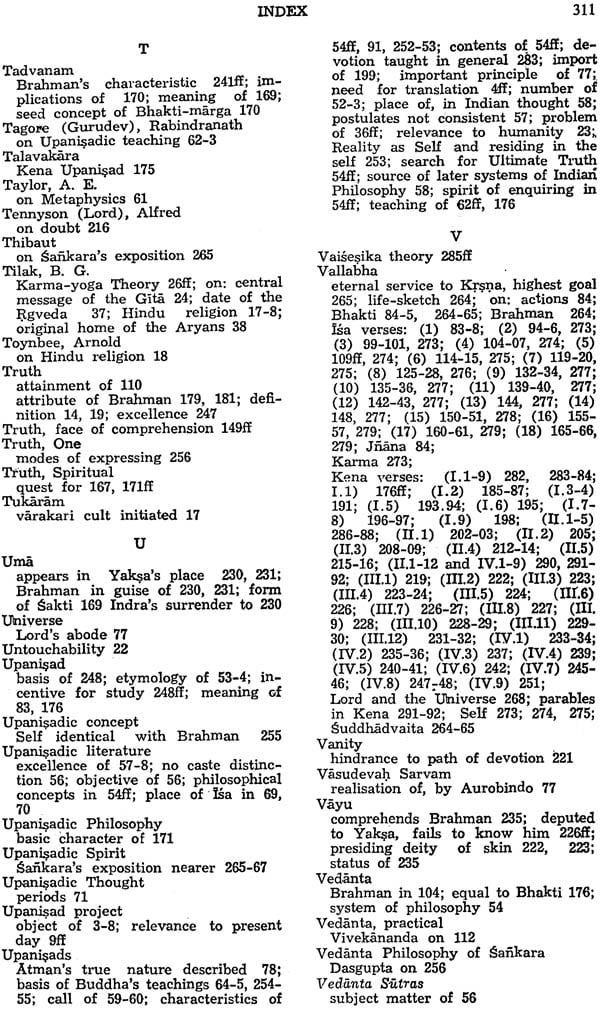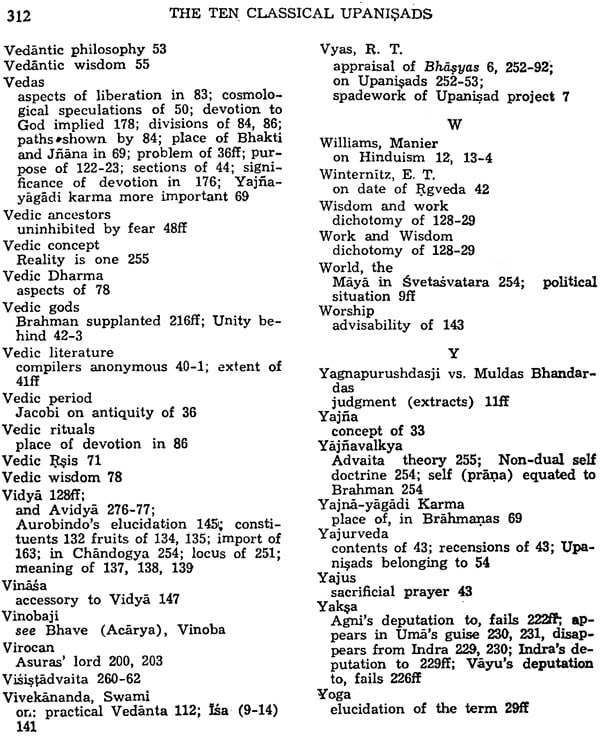
The Ten Classical Upanisads (Isa & Kena)
Book Specification
| Item Code: | NAK035 |
| Author: | P. B. Gajendragadkar |
| Publisher: | Bharatiya Vidya Bhavan |
| Language: | English |
| Edition: | 2014 |
| ISBN: | 788172765170 |
| Pages: | 327 (1 B/W Illustrations) |
| Cover: | Hardcover |
| Other Details | 10.0 inch x 7.0 inch |
| Weight | 400 gm |
Book Description
Every age reads anew its classics, reinterpreting them to the changing needs of its people. In India where tradition has played a very prominent role, this reinterpretation has gone on with greater zeal and is more marked in the case of texts that have enjoyed unquestioned authority. The Upanisads belong to this category. They have been commented upon by many, not just in India and in the language in which they were written but by oriental scholars from all over the world and in diverse languages.
A new situation confronts India today. Those who can read the original Sanskrit text and the Sanskrit commentaries are few and many of them are cut off from the contemporary trends and developments, knowledge of which can come through a window language other than Sanskrit. It has been the cherished objective of the Bhavan to let those who can speak in this contemporaneous idiom speak to the modern generation of hte ancient task Dr. P. B. Gajendragadkar, the General Editor and Chairman of the Bhavan's new project, has set before himself.
Hailing as he does from a family of erudite Sanskrit scholars, Dr. Gajendragadkar has in him the blend of twin qualities that have enabled him to perform this task: of getting at the cost of the Upanisadic thought and interpreting it to his fellowmen in contemporaneous idiom. No better instance can be given of his competence for this task than his historic pronouncements on Hinduism found in the Introduction contributed by him for this, the first volume of the Series.
It is hardly necessary to add that Dr. Gajendragadkar has to his credit several works on Constitutional Law and Social Justice as well as Hindu law. His published works include Law and Social Justice and Indian Parliament and Fundamental Rights. He is the Editor of Mookerjee's Hindu Law and Religious and Charitable Trusts. He began his authorship by critically editing the Dattaka Mimanmsa by translating and commenting on it. Dattaka Mimamsa is the main document of which the original Hindu Law is based. Them followed several works. He has also delivered several memorial lectures.
Dr. Gajendragadkar was the Chief Justice of India, Vice-Chancellor of the University of Bombay, the first Chancellor of the Gandhigram Rural Institute, Madurai, and Chairman of the Law Commission, Government of India. He also beaded several other Commissions set up by the union Government.
The Ten Classical Upanisads provide the reader with a text is accurate and a translation that is set in the context of the commentaries of the renowned Acaryas, together with an appraisal of them and the comments of the General Editor, particularly in the light of the requirements of the contemporary community and the progressive future of the world. The comments of the General Editor are followed by the Bhasyas of the Upanisads by the four Acaryas – Sankara, Ramanuja, Madhva and Vallabha – rendered into English by a team of scholars, so that in one place the reader would find the views of the four Acaryas and the General Editor's own views. This is the special feature of this project. The quintessential wisdom of the Upanisads cannot but invite a richness of comment and this is amply borne out by the commentaries presented here.
The first volume deals with two of the shorter but profound Upanisads, the Isa and the Kena, which in their small compass have enunciated almost all that has to be said in the enunciated almost all that has to be said in the sphere of Adhyatma vidya. That even among the Upanisads, the Isa has fascinated and continues to fascinate scholars cannot be gainsaid.
The Upanisads were the solace of Schopenhauer and they will continue to be the Solace of all who go to them.
Justice Gajandragadkar was a renowned jurist whose opinions are respectfully read and used to this day. He served as the Chief Justice of India and later as the Chairman of the Law Commission, Government of India. Justice Gajendragadkar hailed from a family of Samskrt Pandits who were recognized for their scholarship. Such was the fame of his great grandfather, Raghavendracharya, that Pratapsingh Maharaj sent an emissary to invite Raghavendracharya to come to Satara to serve as the Raj-Pandit of the Maratha Realm. He accepted and moved his family from Gajendragad to Satara thereby getting the surname Gajendragadkar for the family according to the prevalent custom.
Justice Gajendragadkar's father, the second Raghavendracharya, was a highly acclaimed scholar feted by the leading luminaries of his era. Justice Gajendragadkar studied the great texts of Indian thought from his father whom he later described as the greatest scholar he had known.
This combination of great knowledge of modern law & its analytical interpretative discipline and the deep scholarship of Indian spiritual, metaphysical and ethical texts is rare indeed. It is this twin scholarship that made Justice Gajendragadkar a unique teacher and interpreter of the Upanisads.
Consider, as an example, his discussion of difficulties involved in accurately conveying the meaning of Samskrt concepts into English:
"Justice Holmes while interpreting a somewhat obscure provision of the American Constitution observed that words are not like crystals. Their meanings have to be determined in the light of all the relevant factors and not by adoption of the rule of dictionary. This observation was made by the Judge while interpreting a somewhat obscure provision of the American Constitution which is written in English and the interpretation had to be made also in English. And yet Holmes felt words do not always bear the same meaning. They must not be read in the light of the dictionary alone but in the light of the context and the general tenor and purpose of the relevant provisions and therefore they cannot be regarded as crystals. It can then well be imagined how difficult the task of the translator would be when he is attempting to translate the Philosophical contents of the Upanisads written is Sanskrit in a language which is foreign, viz. English.
It is very surprising that very principle has been more elaborately stated in the Brhaddevata it says:
While interpreting a Mantra one should take into account of the dictionary meaning, the context, the reason and also the time and place of occurrence as well the propriety that attaches to the utterances."
Such integrated commentary on modern western law and the eternal wisdom of the Upanisads came easily to Justice Gnjendragadkar because of his twin scholarship.
Is this book on ISA and Kena Upanisads relevant in the context of Today?
This question was discussed and answered by Justice Gajendragadkar in his INTRODUCTION to his book. Much of what he wrote in 1981 remains true today perhaps more so Education in India and much of today's public discourse is dominated by the belief that western thought is rational while Indian thought is mainly spiritual and devoid of the capabilities of modern analytical disciplines. As a result, Indian thought is often described in today's media as obsolete of backward. This is an utter canard and nothing can be farther from reality.
Consider, for example, the Proclamation from the America's Declaration of Independence – "all men are created equal". This is hailed all over the world as a symnol of illuminated modern thought, a beacon of light for the entire world and especially for supposedly backward Indian Society beset by deep social evils like Casteism & zUntouchability. If you believe this, then perhaps you should indeed read the Isa Upanisad.
Verse 7 of the Isa-Upanisad says "Saravant Bhutani atmaivaabhut" or literally "all beings become united with own Self. Verse 6 says "whoever sees all beings in one self and recognizes his own Self in all beings, does not feel repelled by any being".
Think of the enormity of this. What is now regarded as a beacon of modern ethical thought was more elaborately articulated thousands of years before the American Declaration was written.
It is tragic that both societies forgot the wisdom of their seers and practiced the very antithesis of what their founding seers preached. American society took another 200 years to legislate "equality of all men" into law and to provide equal civil rights to American citizens of colour. Indian society rejected the wisdom of the upanisads of fall into horrific practices of caste or jati-based discrimination. But these were practices and as such subject to change. And both societies are indeed changing.
Bhavan's Book University and its objectives:
With his characteristic vision Munshiji founded the Bharatiya Vidya Bhavan, in 1938, for the purpose of usherning in an era of Indian renaissance. The Bhavan was first located in a small room in the Khalsa College and it began its social, cultural and other allied activities from that room. Its initial capital consisted of no more than Rs.1200/- per month contributed by Munshiji himself and three other friends. As its work expanded, the nation realised the significance of the mission of the Bhavan. Naturally, in course of time the Bhavan established its centres in all parts of the country and in fact in 1917, it crossed the ocean and started a centre in U.K. The centre was initially located in rented premises, but later, it acquired a magnificent building, as magnificent as the Central building of the Bombay Bhavan itself, and decorated it in a truly Indian style. This was taken possession of formally on the 25th Dec. 1977 and on the 19th July 1978 it was inaugurated by the British Prime Minister, Mr. James Callaghan. Several dignitaries like Lord Mountbatten, Mr. Harolod Macmillan and others attended this function.
In the near future, the Bhavan hopes to start a centre in New York. Thus the dream of the founder to make the Bhavan an instrument of Indian renaissance and spread its message throughout Preferred to say that he was not the founder of the Bhavan but providence blessed him and chose him as His instrument in this process. As is sometimes said "from small streamlets mighty rivers grow," the Bhavan has grown to its present impressive and massive from steadily from a small beginning.
Some time after the Bhavan its activities, in 1938, Munshiji realised that it was necessary to supplement its work by starting a Book University and a Journal. That is why the Book University was started in 1951 and the Journal in 1954.
In regard to the Project of the Book University, Munshiji said: "The Book University sponsored by the Bharatiya Vidya Bhavan has met with a fair share of a success. This low-priced series of valuable books has found a market not only in India but is U.S.A. and U.K and some other countries as well"
In releasing the first book under the Book University series which was written by Shri C. Rajagopalachari entitled "Mahabharata" Munshiji said what Bharatiya Vidya stands for:
"Bharatiya Siksa must ensure that no promising young Indian of character having faith in Bharat and her culture Bharatiya Vidya, should be left without modern educational equipment by reason merely of want of funds.
"Bharatiya Siksa must be formative more than informative, and cannot have for its end mere acquisition of knowledge. It's legitimate sphere is not only to develop natural talents but so to shape them as to enable them to absorb and express the permanent values of Bharatiya Vidya. "Bharatiya Siksa must take into account not only the full growth of a student's personality but the totality of his relations and lead him to the highest self-fulfilment of which he is capable.
"Bharatiya Siksa must involve at some stage or the other and intensive study of Sanskrit of Sanskritic languages and their literature, without excluding, if so desired, the study of other languages and literature, ancient and modern.
"The re-integration of Bharatiya Vidya, which is the primary object of Bharatiya Siksa, can only be attained through a study of forces, movements, motives ideas, ideas, forms and art of creative life-energy through which it has expressed itself in different ages as a single continuous process. Bharatiya Siksa must stimulate the student's power of expression, both written and oral, at every stage in accordance with higher ideals attained by the great literary masters in the intellectual and moral spheres."
As Shri S. Ramakrishnan, the Executive Secretary of the Bhavan's Journal, wrote in an editorial "The true University is a collection of good books declared the great Thomas Carlyle. In that spirit, 25 year ago, Kulapati Dr. K. M. Munshi started in a very modest way, the Bhavan's Book University a series of books, emphasising such literature as revealed the deeper impulsions of India and the world to serve the purpose of promoting and continuing higher education, manifesting itself in the cultural elevation of the individual and the development of an integrated personality."
So far the book University has published 353 books and they relate to subjects like Art, Literature, Culture, Biography, Gandhian Literature, History, Mythology, Legend, Fiction, Religion and Philosophy, Sociology and Politics, Vedas and Upanisads. Besides, the titles under print number 45.
This will show how the Book University scheme has fulfilled the fondest hopes and aspirations of Munshiji. The object of starting the Book University and Bhavan's Journal was to establish an intimate contact between the Bhavan and the ever-expanding number of members of its family . This connection was always intended to be in furtherance of its objective for which the Bhavan stands. One can safely say that this purpose of starting the book University and the journal has been fully justified.
2. The Object and Scheme of the Present Project:
The Bhavan has decided to undertake the present project under its scheme of Book University. It will be obvious that the project is in consonance with the spirit of the Book University and if it is completed in a proper manner, it will enrich the Book University itself. When I was asked by the Bhavan's authorities whether I would accept their invitation to be General Edition of the present series, I spontaneously accepted the invitation. The Project covers ten Classical Upanisads and I have agreed to be the General Editor of the Project, though I am fully conscious that I am not competent to accept this onerous responsibility. Two personal motives dominated my mind in accepting this invitation in spite of my full consciousness of my incompetence for the task. One was: I thought to myself, if I can play some role in completing this project, I would have paid my respectful tribute to the reverential memory of Munshiji.
| Hints on Transliteration | ix |
| Introduction | 1 |
| Isavasyopanisad | 67 |
| Kenopanisad | 167 |
| The Four Acaryas on Isa and Kena – an Appraisal | 252 |
| Glossary | 293 |
| Bibliography | 300 |
| Index | 304 |

